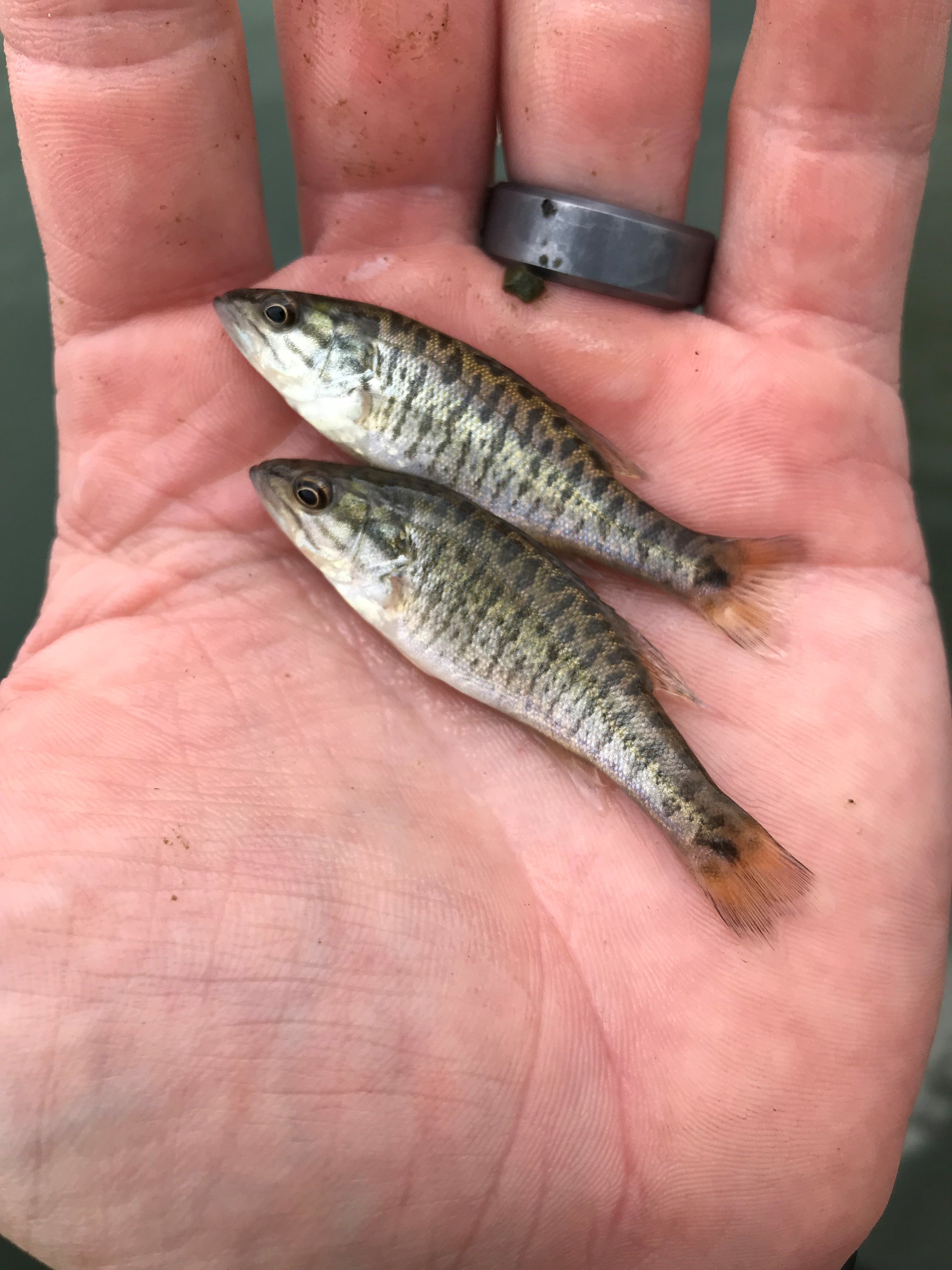Shoal Bass Fingerling released by Florida FWC in Chipola River
Eugene L. 05.19.22

The Chipola River, starting just north of Mariana Florida, is considered the top destination for targeting the hard-fighting Shoal Bass (Micropterus cataractae). These small black bass, while not as popular as their largemouth cousins, are pound-for-pound one of the top fighters in the black bass family. Historically found all throughout the Apalachicola river system, habitat degradation of the main river has eliminated them from the river proper. Now only found in tributary rivers in the area.

When Category 5 Hurricane Michael made landfall in October of 2018 near Mexico Beach, it wiped out more than 90% of the shoal bass population in the Chipola River. As a direct result of this, FWC had passed an executive order that completely forbade the harvest and collection of shoal bass from the Chipola River and all its tributaries. FWC fisheries biologist then collected 16 shoal bass from the Chipola River and transferred them to the Blackwater Fish Hatchery near Holt.
Shoal Bass Fingerling released by Florida FWC in Chipola River

From these 16 brood stock bass and the efforts of the Florida FWC 3,300 shoal bass fingerlings were raised and introduced back into the Chipola River. With the Chipola River, being the only water body in Florida with a known naturally reproducing population of shoal bass. It is of utmost importance to conserve this population of genetically pure shoal bass for the future.

“Shoal bass have very specific habitat needs and it is a major milestone to successfully spawn and grow these fish to a size suitable for stocking,” said Bob DeMauro, Hatchery Manager at FWC’s Blackwater Fisheries Research and Development Center. “It is an incredible success to raise these riverine fish in a still-water hatchery pond when they are used to flowing water and limestone shoals in their natural habitat.”
“This is a great example of research and management partners working together to protect and conserve this native black bass species,” said Andy Strickland, freshwater fisheries biologist with FWC’s Fish and Wildlife Research Institute.